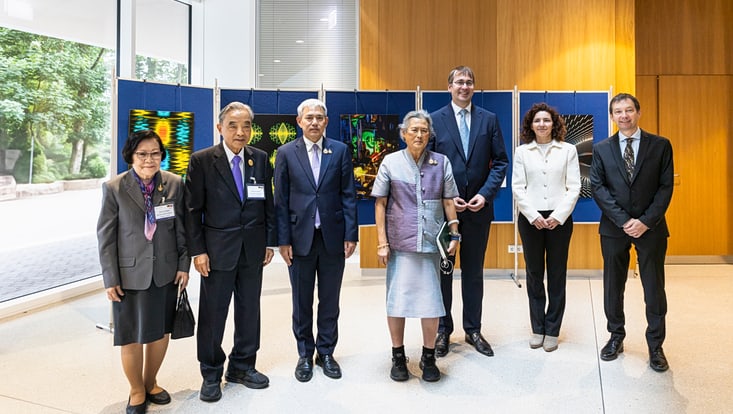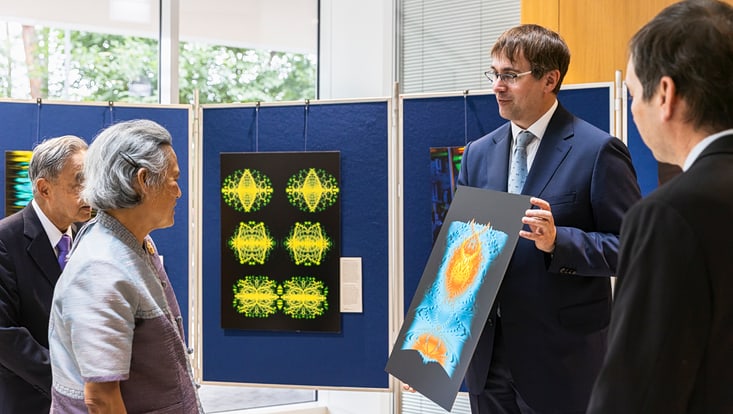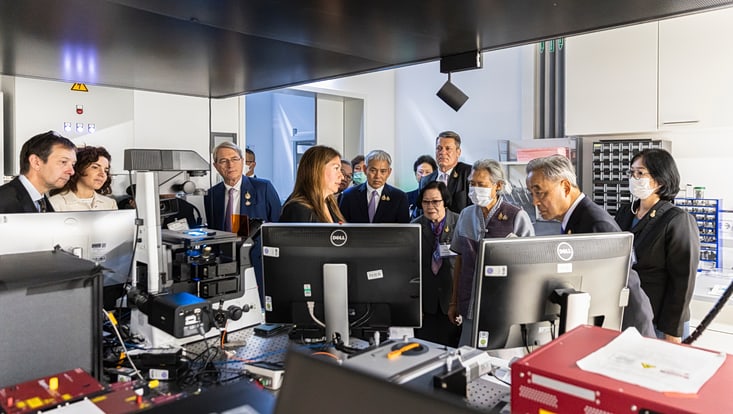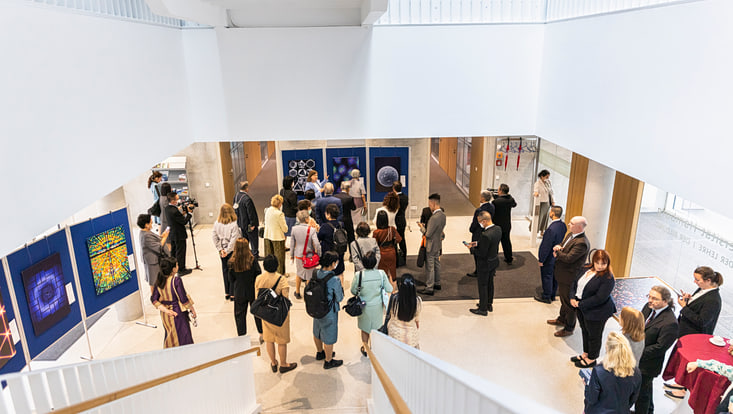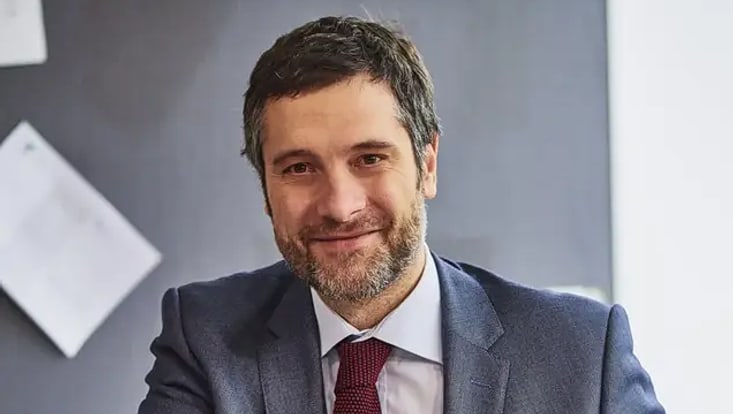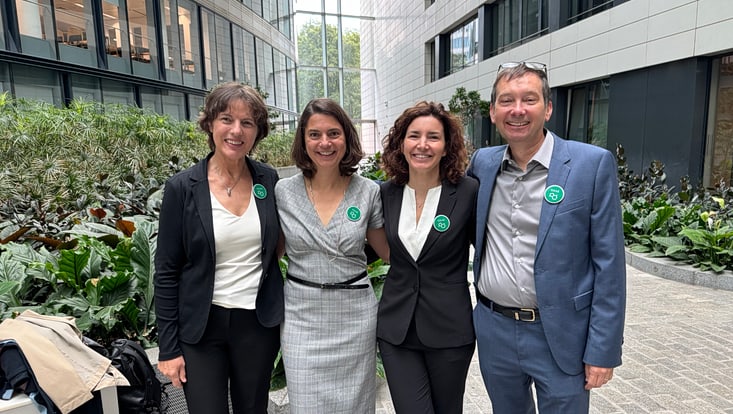Imaging of Matter
Royal visit to the Cluster of Excellence CUI
14 July 2025
During her visit to Hamburg, Princess Maha Chakri Sirindhorn of Thailand toured the Bahrenfeld campus, specifically the Cluster of Excellence “CUI: Advanced Imaging of Matter”. In addition to the cluster's research, she was interested in its “Arts & Science” exhibition and the “Light & Schools” school laboratory.
Princess Maha Chakri Sirindhorn of Thailand was warmly greeted by representatives of the University of Hamburg at the Hamburg Research Center for Bioorganic Chemistry (HARBOR). Vice President Prof. Tilo Böhmann welcomed her together with the spokespersons of the Cluster of Excellence, Prof. Francesca Calegari and Prof. Henry Chapman. After passing the pictures of the “Arts & Science” exhibition, which the Princess later requested to see and have explained in more detail, they proceeded to the ceremoniously decorated seminar room.
The Princess has a keen interest in science and technology and has initiated various collaborations in the past, including with DESY. She also supports young Thai researchers through numerous scholarships and programs.
After an introduction to the Hamburg Centre for Ultrafast Imaging's research and programs, Princess Sirindhorn gained insight into molecular analysis, including DNA, and its medical applications in Dr. Irene Fernandez-Cuesta's laboratory. The team works closely with researchers at the UKE and DESY. The aim is to establish a start-up that can offer liquid biopsies based on the use of plastic fluid chips.
In the “Arts & Science” exhibition, Prof. Francesca Calegari, Prof. Henry Chapman and Prof. Dorota Koziej offered fascinating insights into their fields of research. Detailed explanations of individual images from the exhibition provided a lively overview of developments in attosecond physics, X-ray crystallography, nanoscience and quantum technology at the Cluster.
The tour then led to the Light & Schools school laboratory, where Dr. Jonas Siegl explained the projects for pupils. The Princess was particularly keen to visit the physics school laboratory initiated by CUI spokesperson Prof. Klaus Sengstock. The magneto-optical trap was introduced as one highlight of the school program. It is used for example in an atomic clock or in quantum gas experiments. Here, high school students can experience how atoms can be captured and cooled using magnetic fields and laser light. They also learn about the basic principles of quantum computers and quantum technologies, giving them early insight into one of the most exciting fields of modern science. Overall each year, more than 2,000 students in grades 5 to 13 visit the school laboratory in Hamburg.
The visit ended in Henry Chapman's state-of-the art laboratories at the Center for Free-Electron Laser Science, where Princess Sirindhorn was able to get an idea of the ultra-fast X-ray imaging. Chapman demonstrated the lab's work using the example of the group's pioneering research into the mechanisms of how enzymes repair DNA damage. This process could be understood with the help of time-resolved crystallography of biomolecules, a method that was developed in Hamburg at the Cluster.

